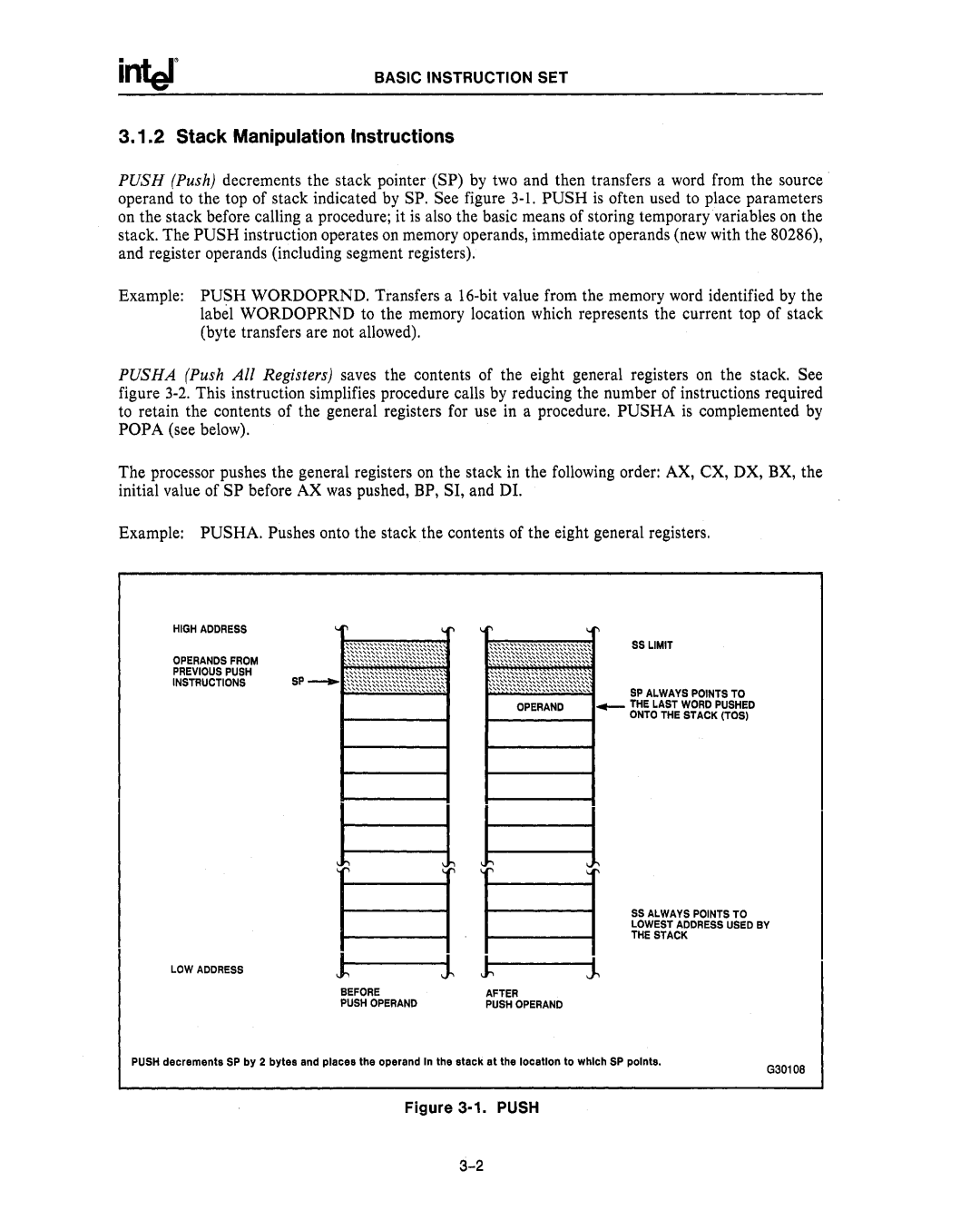
BASIC INSTRUCTION seT
3.1.2 Stack Manipulation Instructions
PUSH (Push) decrements the stack pointer (SP) by two and then transfers a word from the source operand to the top of stack indicated by SP. See figure
Example: PUSH WORDOPRND. Transfers a
PUSHA (Push All Registers) saves the contents of the eight general registers on the stack. See figure
The processor pushes the general registers on the stack in the following order: AX, ex, DX, BX, the initial value of SP before AX was pushed, BP, sr, and Dr.
Example: PUSHA. Pushes onto the stack the contents of the eight general registers.
HIGH ADDRESS
SS LIMIT
OPERANDS FROM
PREVIOUS PUSH
INSTRUCTIONS
SP ALWAYS POINTS TO
OPERAND _ THE LAST WORD PUSHED ONTO THE STACK (TOS)
SS ALWAYS POINTS TO
LOWEST ADDRESS USED BY
THE STACK
LOW ADDRESS | 1 | i! | i |
|
|
| |
| BEFORE | AFTER |
|
| PUSH OPERAND | PUSH OPERAND |
|
PUSH decrements SP by 2 bytes and places the operand In the stack at the location to which SP points.
G3010B
